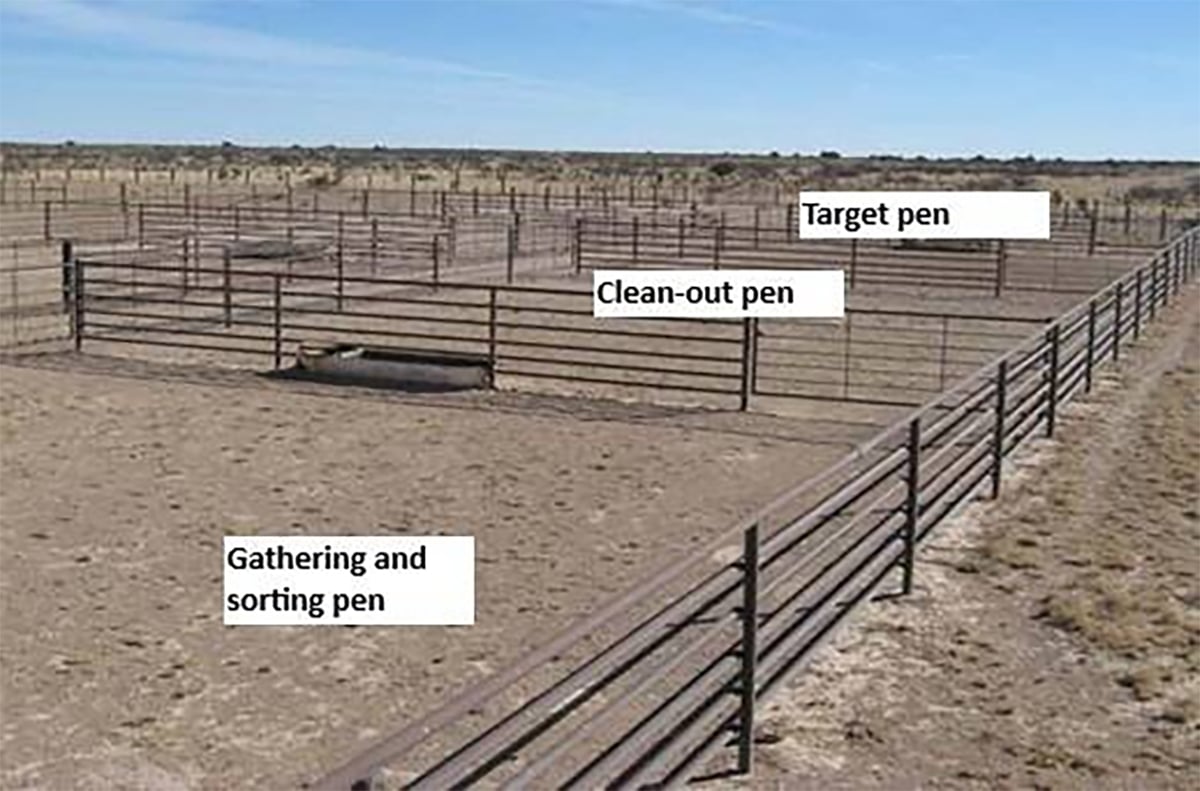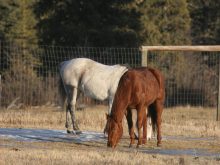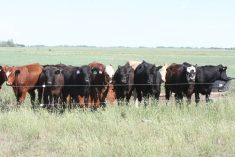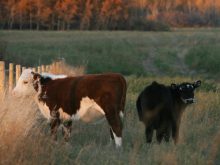Once the mainstay of prairie agriculture, draft horses are now much less common. The most familiar breeds on the Prairies include Belgiums, Percheron, Clydesdales and Shires.
Horses, including draft breeds — and also thoroughbreds — can suffer from a disorder of the larynx. Nerve damage inactivates the muscle that normally opens and closes the left side of the larynx. It isn’t well understood why the left side is most often affected.
The damaged nerve and non-functioning muscle causes the floppy bit of cartilage to block part of the opening. Airflow is then limited into the trachea (windpipe).
Read Also

Teamwork and well-designed handling systems part of safely working cattle
When moving cattle, the safety of handlers, their team and their animals all boils down to three things: the cattle, the handling system and the behaviour of the team.
When these horses work hard, the obstructed airflow creates a loud sound, hence the nickname for this disease: roarers. These horses can’t work or exercise effectively because their airway is compromised.
Diagnosis is based on the history of loud noises during exertion, physical examination and visualizing the larynx with an endoscope. The latter is a small, flexible camera a veterinarian passes through the nose and into the back of the throat. The camera helps visualize the wayward, flopping larynx cartilage.
Surgical treatment involves using sutures to physically tie open the cartilage flap and is called a “tie-back” procedure. It does have some risks, including rare poor outcomes from general anesthesia. Horses may develop a chronic cough, and with the larynx permanently open, they could inhale feed material, potentially causing pneumonia.
Another condition that occurs in some draft horses is exertional rhabdomyelitis, also known as “tying up.” Yet another name is Monday morning disease. This name derived from the appearance of the condition in work horses after their day of rest on Sundays and return to work on Mondays.
It is a condition in which the muscles break down from heavy work and sometimes in conjunction with abnormalities in the storage of energy molecules.
Affected horses develop severe pain from the muscle damage. Muscle breakdown releases myoglobin, the molecule that gives muscles their red colour. It is filtered out by the kidney, causing damage and also discolouring the urine a dark red.
These horses pee red. They also sweat, quiver, shake and may lie down. They may not want to move and will have stiff, firm muscles over the back and hindquarters.
The diagnosis is confirmed with the identification of high levels of muscle breakdown products in the blood. Horses that have repeated bouts may lose muscle mass over the top line.
A genetic test is available to identify horses with underlying abnormal energy storage in muscles. It requires a hair or blood sample. The genetic abnormality seems to be more common in Belgians than Clydesdales and Shires.
The disease is managed with a diet that is low in carbohydrates and higher in fats. Additionally, these horses need consistent, usually daily exercise to keep them comfortable and in shape.
As with any purebred animal that originates from a limited gene pool, there are unique breed-specific diseases as well.
The beautiful long hair of draft horses’ lower limbs is known as feathers. Two conditions of the legs seem especially common in draft horses because of the feathers.
The first is mange mites, Chorioptes bovis, which infest the skin beneath the feathers. It creates severe itching so horses stamp and scratch at their legs. Treatment includes mite medication and sometimes clipping the hair and administration of topical treatment.
The second is chronic progressive lymphedema, which can be triggered by mite infections, inactivity and other factors. Affected horses have accumulated edema fluid and abnormal skin of the lower limbs. The skin of the pasterns, fetlocks and up the back of the leg become thick with scar tissue, folds and spherical nodules. The cause is suspected to be abnormal lymphatic drainage. These horses benefit from careful management to slow the disease progression.
If you already have one of these gentle giants, or are thinking of getting one, it is important to consider their unique health challenges that differ from light horses and ponies.
Dr. Jamie Rothenburger, DVM, MVetSc,PhD, DACVP, is a veterinarian who practices pathology and is an assistant professor at the University of Calgary’s Faculty of Veterinary Medicine. Twitter: @JRothenburger















